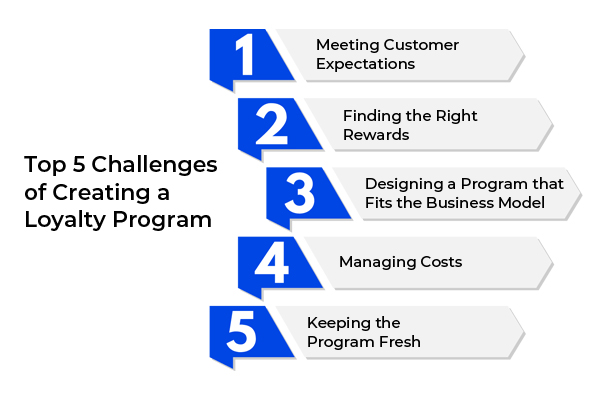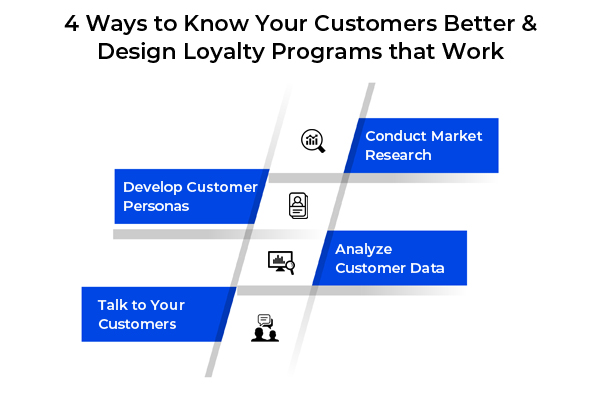How to Design Effective eCommerce Loyalty Programs?
-
 Kamlesh
Kamlesh
- 2 years

In the highly competitive world of eCommerce, retaining customers can be challenging.
With numerous options available to consumers at the click of a button, businesses must keep their customers engaged and loyal to their brand. Using loyalty programs is one of the best ways to do it.
Loyalty programs offer a range of benefits to eCommerce businesses. They help improve customer retention, increase customer lifetime value, and drive repeat sales. However, designing an effective loyalty program can be complicated and require careful planning and execution.
This blog will explore the key factors businesses must consider when designing an eCommerce loyalty program to improve retention. From understanding customer behavior to creating personalized experiences, we will delve into the strategies that can help eCommerce businesses build strong and lasting customer relationships.
So, whether you are a small startup or a large enterprise, read on to discover how to create a loyalty program that drives customer engagement and boosts retention.
What are the Challenges of Creating Effective Loyalty Programs?
Designing an effective loyalty program is difficult because it requires a deep understanding of your customers’ behavior and motivations. In addition, loyalty programs need to be designed in a way that provides value to both the customer and the business.
Here are some challenges that businesses may face when designing loyalty programs:

Meeting customer expectations: Customers expect loyalty programs to be easy to understand, use, and provide real value. Customers may become frustrated and disengage if the rewards are not meaningful or the program is too complicated.
Finding the right rewards: Choosing the right rewards can be a challenge. Rewards must be desirable enough to motivate customers to participate in the program, and they must also be cost-effective for the business. Finding the right balance can be difficult.
Designing a program that fits the business model: The design of a loyalty program needs to be aligned with the business model. For example, a business with a high volume of low-value transactions may need to design a program that rewards customers for their frequency of purchases rather than the value of their purchases.
Managing costs: Running a loyalty program can be expensive, especially if the rewards are generous or if the program requires a lot of administrative work. Businesses need to carefully manage the costs of their loyalty program to ensure that it remains financially viable.
Keeping the program fresh: Loyalty programs must evolve over time to remain engaging for customers. This requires ongoing analysis of customer behavior, feedback, and trends in the market. If the program becomes stale or outdated, customers may lose interest.
Overall, designing an effective loyalty program requires a strategic approach, a good understanding of customer needs and behavior, and ongoing monitoring and refinement to ensure that it remains relevant and valuable for both the customer and the business.
5 Tips to Follow When Designing eCommerce Loyalty Programs
Here are five tips that you should follow when designing eCommerce loyalty programs that work:
- Define Your Goals Clearly
Defining your goals or objectives when creating a loyalty program is important to its success. Thus, before you invest, find out answers to questions like:
- Do you want to increase your website traffic and sales, encourage customer engagement, or improve your customer retention rate?
- What motivates your consumers to shop with your business?
- What types of rewards would they find fascinating?
- How much can you afford to invest in the loyalty program?
Depending on the answers to these questions, determine the metrics you will use to track the success of your loyalty program and set realistic targets. Also, consider your budget when setting your goals. Defining your budget will help you determine the rewards and incentives you can offer.
Also Read: 5 eCommerce Metrics to Track for Analyzing the Performance of Your Business
- Know Your Customers
Developing a deeper understanding of your customers and their needs is the key to success in eCommerce. Also, if you know what will entice them to make a purchase, you can easily design a loyalty program tailored to their interests and motivations, and that provides real value to them. Here is what you should do to know them better:

- Conduct market research to understand your customers’ needs, preferences, and behaviors. This could include surveys, focus groups, or analyzing customer data.
- Develop customer personas to create a clear picture of your typical customer. This includes their demographics, interests, and motivations for shopping with your business.
- Analyze customer data to understand their purchase history, frequency, and average spending. This can help you identify patterns and trends in customer behavior.
- Use social media to talk to your customers and gather insights about their preferences and behavior. Or, you can talk to your customers directly through in-store surveys or online communities.
- Add Personalization
Personalizing a loyalty program can further help increase customer engagement and retention.
You can segment your customers in groups based on their purchase history, demographics, and behavior. It will help you design rewards and incentives that are relevant to each group. For example, if a group of customers frequently purchases a particular product, you could offer them a discount or bonus points for that product.
In addition, you can provide tiered rewards based on the customer’s loyalty level. For example, you could offer a higher percentage discount to customers with a certain spending threshold.
You should add personalization to your communication as well. Your emails and push notifications should always be relevant to generate desired results. Personalized rewards and incentives are more likely to be valued by customers, and personalized communications can help build stronger relationships between the customer and the brand.
- Promote Your Loyalty Program
Do not expect your customers to know about your loyalty program magically. If you are building a loyalty program, make sure you spread the word among your target audience positively. There are multiple ways using which you can do that, for example:
- You can encourage your loyal customers to refer their friends and family to your program by offering them a referral bonus. It will help you attract new customers and reward your existing loyal customers.
- You can promote your loyalty program through different marketing channels such as email, social media, your website, and in-store. However, each channel will require a different approach and message.
- Keep Cost in Control
Cost is a major challenge when designing loyalty programs. But, there are ways to keep costs in control. You can start with a small loyalty program and test it before investing in a larger program. It will allow you to assess its effectiveness and make necessary adjustments before scaling.
The simpler the loyalty program, the easier and less expensive it is to design and implement. You should also avoid adding too many complicated features or tiers that may require more resources and maintenance.
Wrapping Up
In conclusion, loyalty programs can be an effective tool for eCommerce businesses to increase customer retention, lifetime value, and repeat sales. However, designing a successful loyalty program requires careful planning, an understanding of customer behavior, and continuous monitoring and refinement.
You can follow the tips mentioned above to create successful loyalty programs that drive desired outcomes. Or, contact eCommerce marketing experts at Envision eCommerce for additional help.












